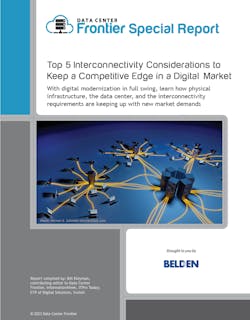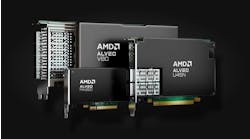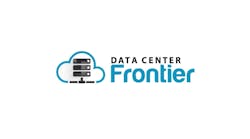Connectivity Modernization: Where We’ve Been, Where We’re Going
Last week we launched our article series on interconnectivity considerations that will help data center and cloud organizations maintain their competitive edge in a connectivity-driven economy. This week we'll explore how new connectivity requirements create new design and partner considerations.
Change is the constant in the data center landscape. It’s essential to take a reflective look at the business to understand how legacy solutions might impact the overall approach to new digital trends. More so, these digital trends are impacting how connectivity modernization is impacting legacy infrastructure.
Here is where we ask some basic questions:
- How old are the systems running the most critical parts of your company?
- Has there been a refresh recently?
- Are you keeping up with networking and connectivity requirements?
- Can your connection solutions support new demands around security and data protection?
Research from ABB indicates that just 29% of data center decision-makers say their current facilities are meeting their needs, and only 6% say their data centers are updated ahead of their needs. Security (45%) and bandwidth (43%) are the most needed upgrades.
Globally, bandwidth and Internet connectivity requirements continue to grow as well. A new report from TeleGeography states that global internet bandwidth rose by 28% in 2022. Total international bandwidth now stands at 997 Tbps, representing a 4-year growth of 29%. As it stands, we have been seeing a near tripling of bandwidth since 2018. It becomes clear why we’ve crossed into the zettabyte era.
However, the only way to truly embrace a digital infrastructure is to understand the significant trends in today’s data centers. Regarding data center design and connectivity, consider these new and critical trends.
- There are new solutions around distributed computing and edge. According to Gartner, around 10% of enterprise- generated data is created and processed outside a traditional centralized data center or cloud. By 2025, Gartner predicts this figure will reach 50%, meaning that services around the edge will continue to evolve and grow. Furthermore, the edge will require a broader focus on connectivity and telecommunications for the best possible experience.
- 5G and new methods of connectivity will impact digital modernization efforts. Gartner also noted that 5G was one of the main drivers for mobility in 2020, with the market for 5G infrastructure hitting more than $4 billion and two-thirds of companies deploying 5G in 2020. The connectivity around 5G and new telecommunication solutions are poised to revolutionize how we work, live, and stay productive. According to Ericsson, towards the end of 2020, there were already more than 92 commercial 5G networks in 38 countries, with more than 320 million 5G subscribers forecasted in the United States by the end of 2025.
- The IT and OT Convergence. In the past, operational and information technol- ogies were two completely isolated pieces of an organization that interacted and often operated independently. Today, that line is blurred to a point where many leading organizations integrate IT and OT into one intelligent platform governed by security, process automation, greater intelligence, and improved data governance. For many, this represents the ultimate goal of working with IT, OT, and third-party partners to support each process.
- IoT is now everywhere. The proliferation of connected devices will not likely slow any time soon. There’s a connected revolution going on from personal smart devices to the insides of walls and ceilings of modern buildings. For example, smart buildings, where devices converge onto a shared IT infrastructure, can deliver more operational functions and improve occupant experience.
With the mandate of “do more with less,” what are leaders doing to ensure they’re meeting market demands while maintaining a competitive edge? A big part of this is how data center leaders design their connectivity infrastructure. However, not all connectivity is built the same. The evolution we’ve seen in our industry isn’t only technological, but partners have also evolved.
New Connectivity Requirements Create New Design and Partner Considerations
Designing around a growing connectivity portfolio can often be a daunting task. So, if the goal is building, retrofitting, and upgrading the connectivity and telecom environment, consider the following advice:
- Innovation is Be sure to engage innovation- focused, global partners that can provide collaborative, consultative guidance from design to operation to decommissioning phases.
- Do more with less, and focus on Work with partners that deploy an R&D focus well- suited for managing high-density environments.
- Define your roadmap with your partners. A good partner will clearly define a road map for the business’s future.
- Easier to manage and faster to deploy. To succeed in this market, look for improved solutions for faster deployment and simplified maintenance.
- Connectivity collaboration. Telecom is not an island. Look for partners collaborating with engineering and architectural teams to design, modify and customize solutions quickly.
- Think locally, and be ready to execute globally. A good partner will synergize operations and processes across all locations for global consistency.
- Simplicity and sustainability. Enlist partners that can design affordable, efficient, flexible, and sustainable solutions.
- Security-first mentality. Whether intentional and malicious or unintentional and accidental, the impact of these threats can be tremendous, leading to costly downtime or lapses in control that could jeopardize the operational safety of your systems. Look for partners with a broad cyber security portfolio, enabling coverage for all threats — deliberate or involuntary.
When creating connectivity for digital infrastructure, it’s essential to consider partners that help deliver on connectivity, security, and business requirements. These designs help operators achieve maximum data center uptime, sustainability, density, and cost-efficiency goals.
Overcoming Connectivity Challenges in the Digital Age
Let’s begin to shift our focus a bit. New solutions are changing the way technology leaders design critical infrastructure, and these new designs are helping engineers and architects create denser and more efficient solutions within data center walls.
Data center operators and managers set their sights on innovative architecture to gain a competitive edge, from new cooling designs to advanced connectivity. Beyond traditional solutions, leaders are still asking the following questions about challenges in a persistently connected world:
- Can our digital infrastructure work smarter, better, and more sustainably?
- Is it possible to leverage systems to help comply with various environmental requirements, compliance regulations, data privacy, and security demands?
- Regarding IoT and new connections, how do we handle large amounts of fiber connections and increase fiber density without compromising ease of use?
- How do I leverage innovative solutions to improve density, security, and connectivity?
- What tools can I use to create a more efficient connectivity and fiber infrastructure while reducing capital and operating expenses to offer a lower total cost of ownership?
The good news is that the industry has heard these challenges and has come back with answers. We must look beyond traditional telecommunications solutions to modernize digital infrastructure to support new connectivity requirements.
Remember, new technology like 5G and IoT, IP migration, the move to 4K content, the shift from 40G to 100G Ethernet, and emerging 400G technologies are changing the landscape in data centers, broadcast environments, and entertainment venues. More fiber connections and a new approach to connectivity are needed to handle these unavoidable demands. You’ll also need to adopt new connectivity strategies to stay ahead of the market.
To ensure uptime and efficient operation and maintenance, there’s also an increasing need to manage these growing numbers of fiber connections effectively.
Download the entire report, Top 5 Interconnectivity Considerations to Keep a Competitive Edge in a Digital Market, featuring Belden, to learn more. In our next article, we'll dive into connectivity modernization and some key considerations to help you keep a competitive edge.







